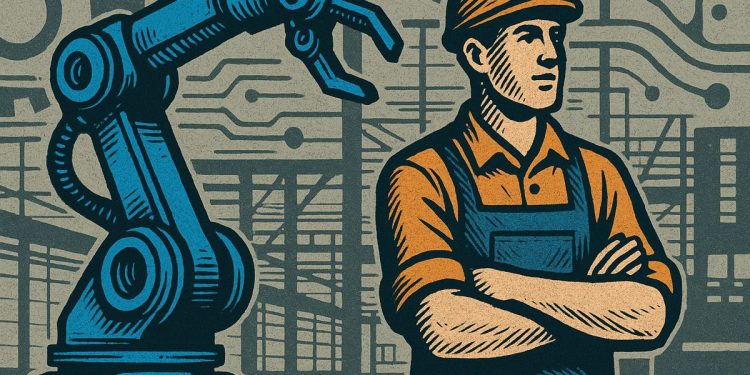Artificial intelligence is changing factories by making machines smarter, reducing breakdowns, and catching mistakes that people might miss. Many workers are nervous about robots taking their jobs, but companies are teaching them new skills using fun, easy ways like quick lessons and virtual reality. Some places even reward workers who learn to use robots by giving them more pay and letting them help others. At the same time, factories are working hard to keep their computers safe from hackers. In the future, the factories that work best will be the ones where people and smart machines learn and work together safely.
How is artificial intelligence transforming manufacturing in 2025?
Artificial intelligence is revolutionizing manufacturing by driving productivity, reducing downtime with predictive maintenance, and improving quality control through computer vision. Companies are investing in AI training for workers, using augmented reality for skill-building, and prioritizing cybersecurity to safeguard operations and maximize efficiency.
Manufacturing in 2025 stands on the edge of a productivity leap powered by artificial intelligence, yet the path forward is strewn with cyber risks, operational chaos, and a workforce that is equal parts curious and anxious. New survey data from Deloitte show that 52 % of U.S. plants now run AI in at least one workflow, up from barely a third in 2023. The global market for factory AI has ballooned to $5.94 billion last year and is forecast to reach $231 billion by 2034, a compound annual growth rate of 44 %.
Predictive maintenance remains the headline application. Algorithms that listen to vibration, temperature and acoustic sensors have trimmed unplanned downtime by 30 % and maintenance cost by a quarter. Computer-vision quality-control cells inspect welds, circuit boards and pharmaceutical vials in real time, flagging defects that human eyes miss. Behind the scenes, generative AI is beginning to design lighter brackets, optimise heat-exchanger geometry and even draft standard-operating procedures that once took engineers days.
The human dimension is where the story gets delicate. Roughly 36 % of frontline employees fear the next software update could make their role obsolete; only 14 % have so far received formal AI training. To close the gap, firms are rolling out modular, stackable learning paths that workers can tackle in 15-minute chunks on the production floor or at home. Augmented-reality headsets let technicians rehearse robot-teaching routines in a virtual twin of the plant before touching live equipment.
German supplier Bosch pairs every new cobot with a “trainer badge” programme: operators who master basic programming earn a pay bump and become internal coaches. The result is a waiting list to join AI projects, instead of passive resistance. Similar initiatives at Siemens and Foxconn use adaptive learning platforms that tweak lesson difficulty in real time, raising completion rates above 80 %.
Ethical implementation starts with language. Corporate memos now speak of AI “copilots” and “assist modes”, stressing augmentation over replacement. Union reps sit in design reviews, and frontline feedback loops feed directly into model updates. Cybersecurity is given equal airtime: 40 % of manufacturers are earmarking parts of their IT budget for threat-hunting services and zero-trust architectures so that efficiency gains are not erased by ransomware downtime.
In short, the plants that thrive in the next decade will be the ones that treat artificial intelligence as a teammate, train the teammate beside the workforce, and guard the gate against digital intruders all at once.



















